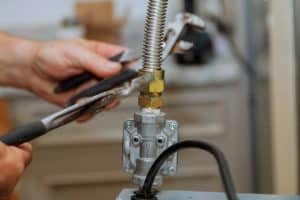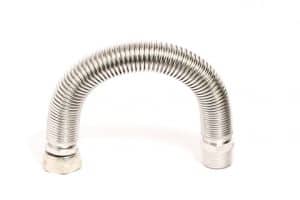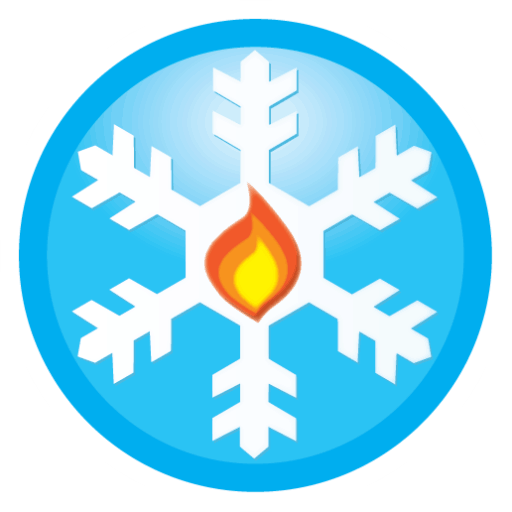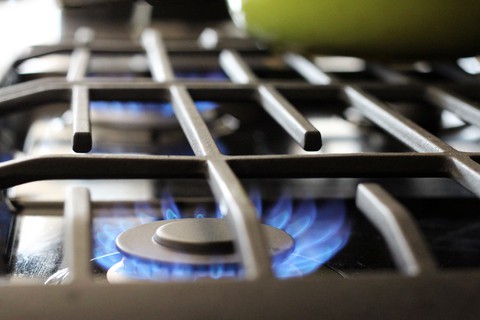A gas conversion for appliances such as stoves and driers is usually quick and easy for homes in and around Boise, ID. Most neighborhoods and towns here have gas lines in them. If yours does, then Intermountain Gas runs the line to your house, and we run it from there to the appliances.
Electric heat has been the more common utility in the Treasure Valley. But, gas has been around for about 50 years and is now becoming more popular.
With Boise and other nearby cities growing like crazy over the past few years, we’re getting more and more calls from people who want to install gas for their appliances.
Many people moving here, especially from California, are much more comfortable cooking with gas. On top of that, people love outdoor fireplaces and fire pits that use natural gas.
The same goes for modern HVAC upgrades like tankless water heaters.
Well, the good news is that a conversion is fast, easy, and doesn’t cost too much. You can even save money depending on what time of year you buy a new HVAC system and whether or not you replace your AC and furnace at the same time.
Of course, you’ll run into problems sometimes. But, for the most part, it’s a straightforward operation.
And that’s the topic for this article. If you’re interested in a gas conversion for your Boise, ID home, we’ll walk you through:
- How It’s Done
- How Long It Takes
- How Much It Costs
- How To Save Money Doing It
If you want more information, or if you’re ready for a quote, call or email us here at Snowflake Air! We have an excellent track record with installations like these and an excellent reputation in general.
How It’s Done
The two common scenarios are that there’s no gas at all in the house. Or, you have gas heat but an electric stove and dryer and want to change over.
Working With Existing Lines
If there’s already a gas line, the process is pretty simple.

First, we make sure you have enough cubic feet of gas coming into the house. If there’s not enough coming in, we usually install a larger main gas line.
That way, you get a larger inflow of gas — enough to serve the new branches to the new appliances and what’s already there.
Installing New Lines
If you don’t have any gas service yet, our first step is calling Intermountain Gas. They’ll tell us right away if you have lines nearby.
If the lines are available, you, as the homeowner, call the utility to get into a contract. Once they install the meter and the lines, we come in.
Running Gas Through Your Home
Once the lines from the main are set, we’re ready to work. Our job is either adding more branches to your existing lines inside. Or, we run them wherever they’re needed throughout the house.
We’ll get into the cost and time it takes next. But for now, we wanted to mention how easy it’s gotten for us to do work like this.
We use flexible gas lines that make it easy to install in whatever configuration we need. And, we use a manifold technique, where we run one line in and attach a special short pipe with a bunch of outlets on them.

That way, we have an easy splitting point for all the branches. It makes the job quicker and more straightforward.
How Long It Takes
For as big a difference as a gas conversion makes in your house, the actual process is pretty quick.
While we can’t speak for the utility company, in our experience, they usually get their part done within seven business days. That’s only if they need to run the line and install the meter.
For our part, we usually have everything done in up to three days. Less if we’re just running to one or two appliances versus building out from the mainline.
How Much It Costs
All told, the average cost of switching to gas is usually under $4,000. There are plenty of factors to consider, of course, but that’s a start.

It starts with the utility company — and the good news is that they’ll run lines to your house for free!
Since Intermountain makes their money providing you gas, they’re more than happy to set up a new customer free of charge. Once that’s done, you’re looking at the cost to run lines through the house.
At Snowflake Air, our gas conversions starts with a setup fee of around $400. That covers the materials, truck and whatever’s necessary to do the job. After that, we charge $12 per linear foot of piping.
You can get a rough estimate of that cost yourself. Measure an imaginary water line through your house, going from the main to each appliance. Then multiply the length, in feet, by 12.
Of course, that’s a rough idea, and we can’t give you a firm price until we see your house. We need to make sure there are clear paths to everything. And, as we mentioned, sometimes the main coming into the house needs to be upsized to account for more appliances.
Then, if you’re running to outside appliances like a fire pit or barbecue, we need to use a different kind of line and dig at least 18 inches.
This work requires permits, special feedings, a shutoff valve, and a few other regulations.
Most of the time, it’s still affordable. But, we don’t want you to measure from the house to the fire pit and then get surprised if we quote you higher.
Gas Conversion Incentives
You also have opportunities to bring down the cost of the work thanks to various gas conversion incentives.
To start with, you can apply for a tax credit if you buy a new energy-efficient furnace. And, Intermountain Gas offers rebates to get you cashback directly on new energy-efficient equipment.
You can also apply for low-interest loans from the State Energy Loan Program. And, there’s the $1,200 Whole Home rebate from Intermountain when you meet specific requirements.
We recommend deciding what you want first. Once we provide the initial price, we’ll work closely to make sure you capture every eligible tax credit, rebate, and incentive to bring that cost down.
Natural Gas Conversions For Appliances In Boise, ID
Call or email Snowflake Air for a free consultation on a gas conversion for your home in Boise, Kuna, Meridian, or anywhere in the Treasure Valley. We’re up-to-date and invested in the latest and greatest and ways to convert your home quickly and for as little as possible.




